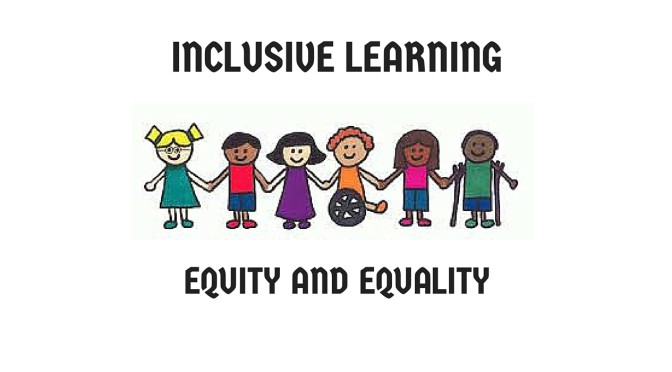
For inclusive learning to be effective, equity and equality must be considered. In classroom environment, equity means providing equal opportunities for all learners while equality means attending to all learners with all fairness, without the slightest form of discrimination. A college which practices equity and equality effectively demonstrates and promotes the rights and well being of all learners irrespective of their socio-economic status, gender, religion, geographical background, ability or disability. However, there are barriers to inclusive learning. These are:
Students with special needs are at times excluded from learning. This mostly happens when colleges fail to effectively implement policies and programmes that support the inclusion of learners with physical, emotional, or learning impairments. The inability of teachers to handle with special needs or abilities may also be a major contribution to the exclusion of learners. Even the school’s facilities such as steps or stairways may prevent such students from attending some classes and college events. In addition, the curriculum content, teaching methods and even the “language” of instruction (spoken or non-verbal) may not be appropriate for them.
Some learners may be excluded from participating and learning in the classroom. For instance, they may be learners who are never called upon by the teacher to share their views, who never offer to participate or those who are not learning well and no attempt is made to help them.
Learners affected by or infected with HIV/AIDS may sometimes feel stigmatized and eventually drop out of school. Still, students whose parents have died from AIDS are less likely to attend school than those who have not lost a parent. In other cases, some students may be excluded from school by community members or even teachers due to lack of understanding on handling learners affected by scourge or infected by the virus.
Learning is often hindered when learners are treated differently in view of their religion, gender, ethnicity, economic status among other differences.
In some countries and communities, girls who become pregnant while in school are excluded from school because they are perceived as “promiscuous”. A girl, who is a victim of rape, is sometimes viewed as a source of shame by her family. Consequently, members of her family may no longer want to associate with her and they may see no reason for her to attend school. In some instances, when girls get pregnant and are readmitted in colleges, they may be treated in a manner that makes them feel rejected and this may make them drop out of college.
Attitudes towards people with diverse backgrounds and abilities are perhaps the biggest single barrier to having all youngsters in colleges. Negative attitudes, bias, stereotype, taboos, shame, ignorance, misinformation amongst others may lead to low self-esteem among youngsters from some families. This may result in hiding away and avoiding social interactions. They become invisible members of their communities and this may directly lead to their exclusion from college, even though they have the same rights and needs as other students.
Every shareholder of any learning institution should strive to achieve inclusive learning. Effective inclusion will require practical changes that will enable learners to discover their potential, succeed in classroom activities, in school and within the community.